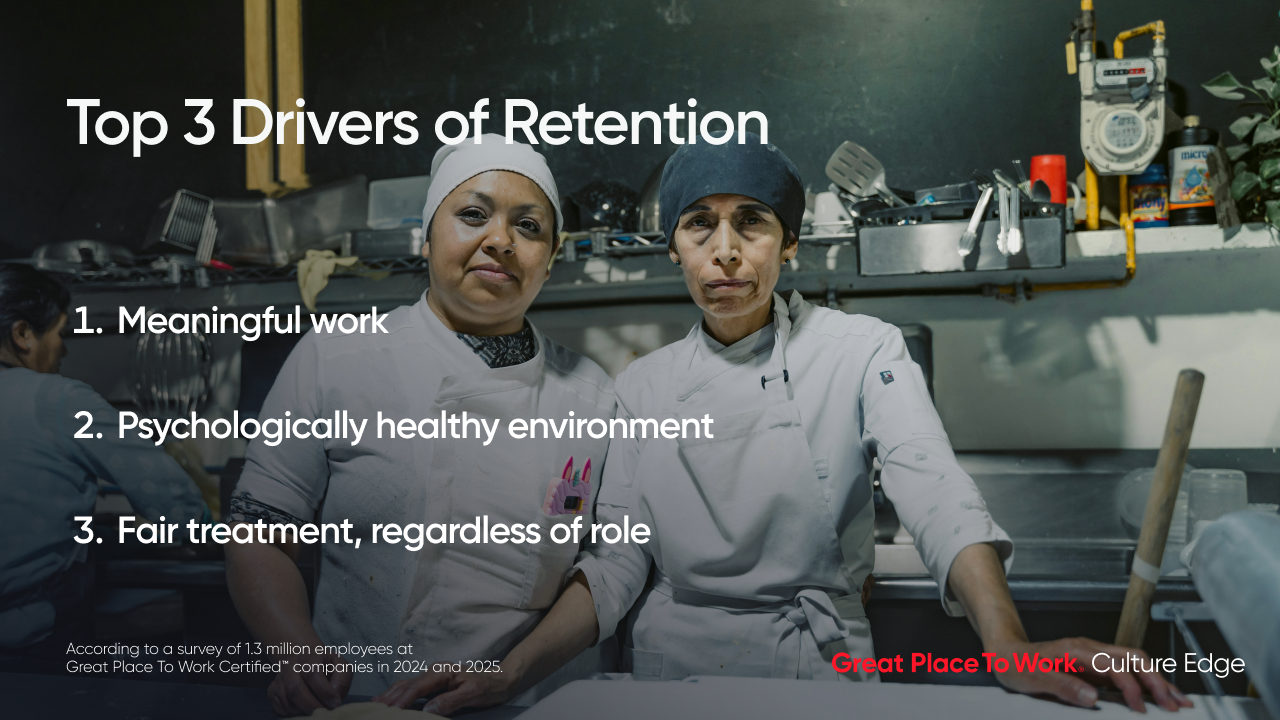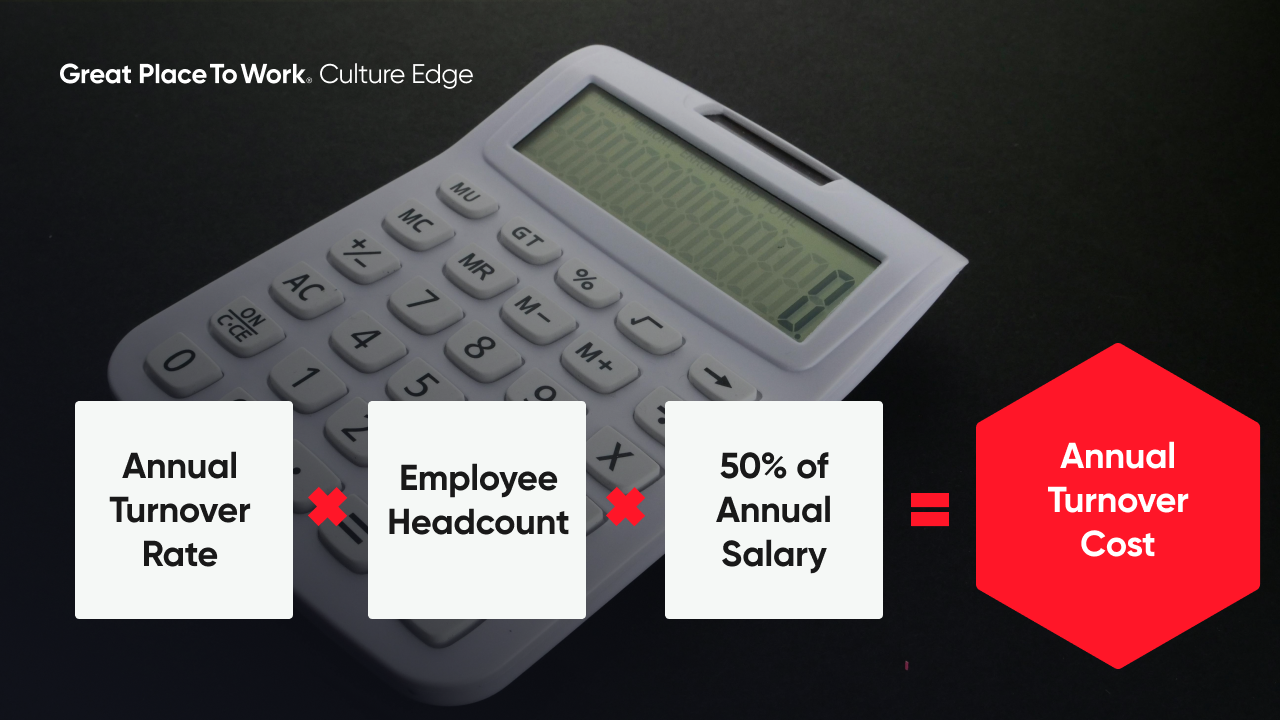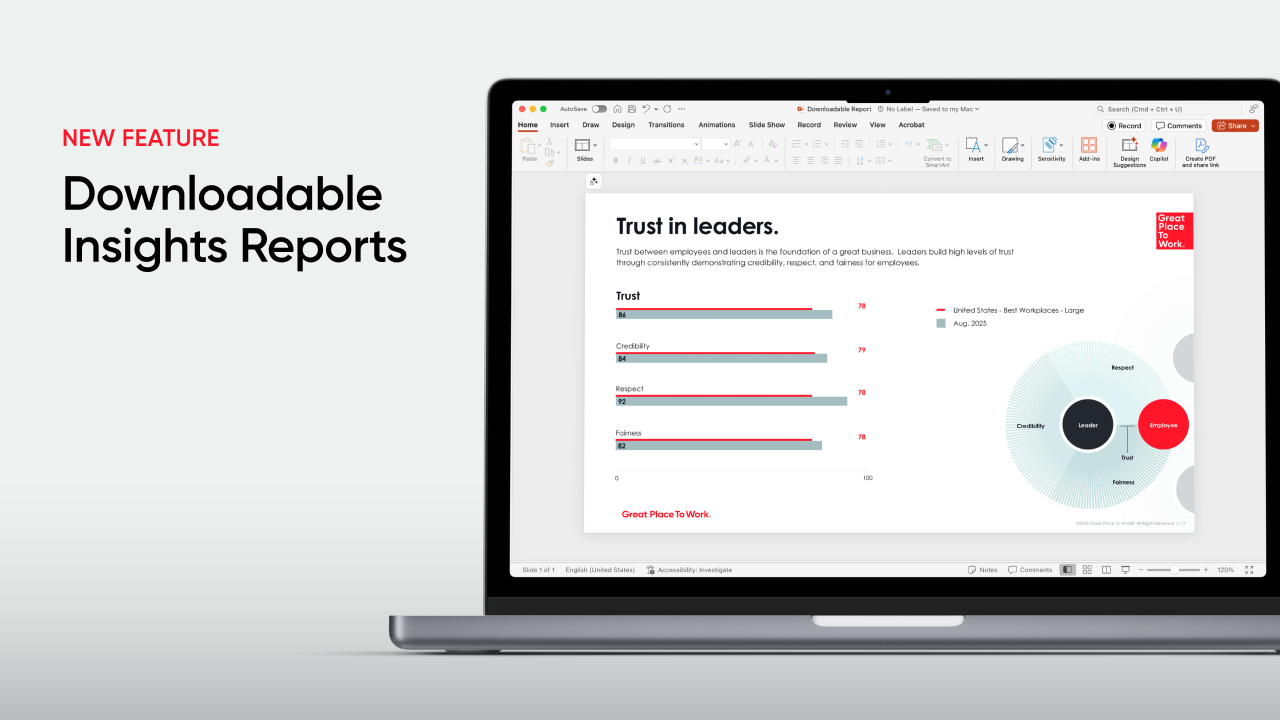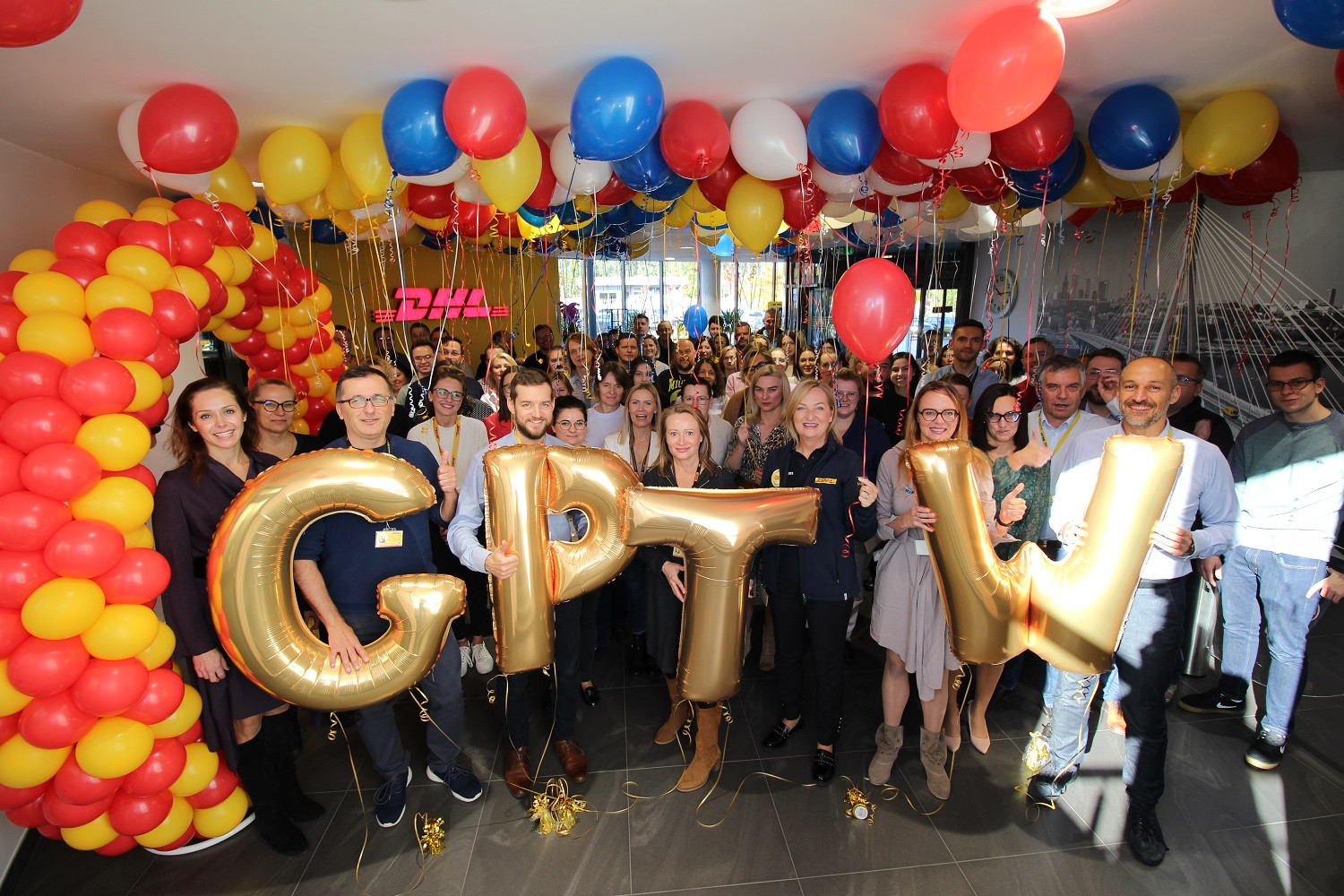Here’s what correlates with higher intent to stay for employees, per more than 1.3 million employee surveys.
What drives employees to stay with a company?
Pay and benefits aren’t the biggest motivators. They matter, but they don’t really differentiate the best workplaces from each other.
At Great Place To Work® Certified™ companies — where organizations meet a minimum threshold of consistent experiences for their workers — the biggest driver of retention is meaningful work.
When employees report that their job has “special meaning,” they are nearly four times more likely to want to stay with their company. That’s more than twice as strong a relationship as the correlation between fair pay and intent to stay, or special and unique benefits.
The top three drivers of retention
Fair pay or unique benefits don’t crack the top three drivers of retention for great workplaces. When employees say they’re paid fairly, they are 54% more likely to want to stay. When they report special benefits? Just 74% more likely.
The biggest retention factors are purpose, psychological and emotional well-being, and a sense of fair treatment, regardless of role. Here’s what the data says:
- Employees who feel their work is meaningful are 294% more likely to want to stay
- People who feel their workplace is psychologically and emotionally healthy are 103% more likely to stay
- If someone feels like a full and respected member of the team, regardless of role, they’re 104% more likely to stay

Gender differences
Great Place To Work analyzed more than 1.3 million surveys taken in 2024 and 2025 and saw some interesting differences between men and women.
Meaningful work is the top retention driver for both men and women, but psychological and emotionally healthy work environments are a stronger driver for women (123% more likely) than for men (87% more likely).
However, the drivers had a significant correlation for both genders, suggesting that any efforts to improve retention for one group would likely improve retention for all workers.
Making the business case for retention
What are the potential savings from holding onto more of your most talented workers?
Replacing an employee can cost between 50% to 200% of their salary, according to the Society of Human Resources Managers. This includes the cost of recruiting to replace them, as well as intangible costs like lost productivity, institutional knowledge, and more. On average, it takes new employees up to 12 months to reach the same level of productivity as departing employees, according to Gallup.
Worker attrition and disengagement cost median S&P 500 companies about $282 million annually, per McKinsey. Companies that prioritize employee engagement could capture $90 million in value.

Using a conservative figure of 50% of the annual salary to replace an employee and using the 2024 average turnover rate from the Bureau of Labor Statistics of 23%, any business can quickly ballpark its potential turnover cost.
For a typical company with 1,000 employees and salaries around $80,000 per employee, the back-of-the-napkin math suggests a typical retention rate might cost as much as $9.2 million.
The cost of retention can add up to much more than the hard numbers. Mosaic Consulting Group calculated the exact cost of turnover, including “hard” costs like paying for background checks, job listing services, and employee training, as well as “soft” costs like manager training time or time spent interviewing candidates. Added together, Mosaic found that reducing turnover allowed it to save $8 million over four years.
With Great Place To Work data, Mosaic’s HR leaders have gotten buy-in for culture initiatives.
“By talking about it from the business perspective and not from what people see as fluffy engagement data, I’ve been able to convert skeptics to believers,” shared Jessica Fuller, vice president of people and culture consulting at Mosaic.
If you have people data, you can tell a story about financial performance. The better your story, the more influence you will have to accomplish your next goal.
Discover the Great Place To Work Effect
Interested in learning more about how your company culture drives business performance? Download our report “The Great Place To Work Effect Playbook.”











